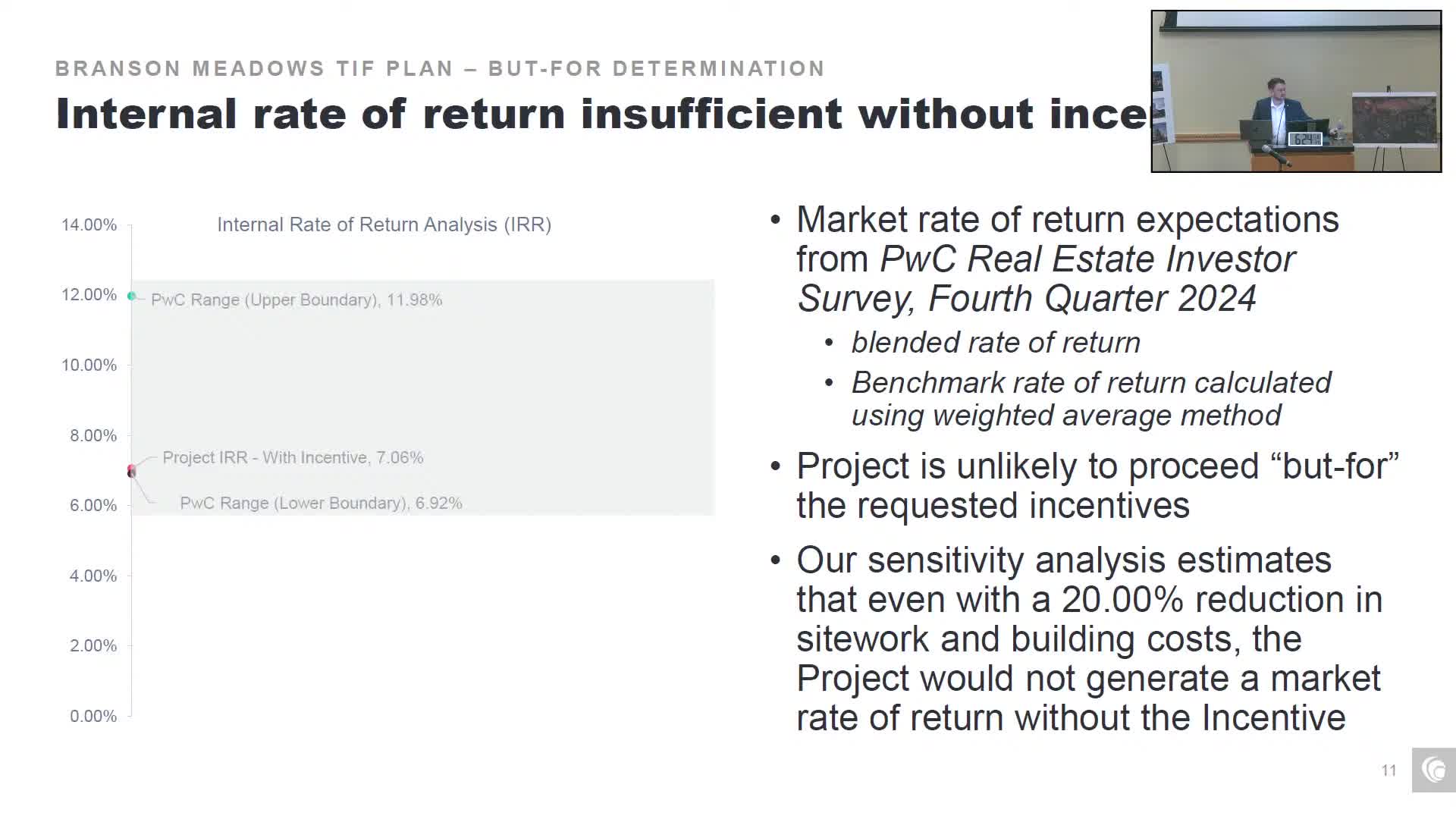Project Viability in Branson hinges on requested financial incentives
July 16, 2025 | Branson, Taney County, Missouri
This article was created by AI summarizing key points discussed. AI makes mistakes, so for full details and context, please refer to the video of the full meeting. Please report any errors so we can fix them. Report an error »

In a recent meeting of the City of Branson's Tax Increment Financing Commission, discussions centered on the financial viability of a proposed development project, highlighting the critical role of incentives in its potential success. The analysis presented indicated that without the requested financial incentives, the project's internal rate of return (IRR) would be insufficient to justify its risks and costs.
The report detailed a blended rate of return that ranged from 6.92% to 11.98%. However, with the proposed incentives, the IRR was adjusted to approximately 7.6%, a slight increase from the initial estimate of 7.11%. This adjustment reflects the project's sensitivity to various financial factors, particularly the high costs associated with site work, which are common in Branson due to its geological conditions.
The analysis emphasized that even with a significant reduction in construction costs—estimated at 20%—the project would still fail to meet market rate returns. This finding underscores the challenges developers face in the current economic landscape, particularly in areas with high development costs.
The commission's discussions revealed that the project's financial assumptions were deemed reasonable based on third-party evaluations. However, the overarching conclusion was clear: without the requested incentives, the likelihood of the project proceeding is minimal. This situation raises important questions about the future of development in Branson and the role of government incentives in fostering economic growth.
As the commission moves forward, the implications of these findings will be crucial for both the city’s development strategy and the potential for future projects in the region. The meeting concluded with a call for further analysis and consideration of the incentives necessary to attract investment and stimulate growth in Branson.
The report detailed a blended rate of return that ranged from 6.92% to 11.98%. However, with the proposed incentives, the IRR was adjusted to approximately 7.6%, a slight increase from the initial estimate of 7.11%. This adjustment reflects the project's sensitivity to various financial factors, particularly the high costs associated with site work, which are common in Branson due to its geological conditions.
The analysis emphasized that even with a significant reduction in construction costs—estimated at 20%—the project would still fail to meet market rate returns. This finding underscores the challenges developers face in the current economic landscape, particularly in areas with high development costs.
The commission's discussions revealed that the project's financial assumptions were deemed reasonable based on third-party evaluations. However, the overarching conclusion was clear: without the requested incentives, the likelihood of the project proceeding is minimal. This situation raises important questions about the future of development in Branson and the role of government incentives in fostering economic growth.
As the commission moves forward, the implications of these findings will be crucial for both the city’s development strategy and the potential for future projects in the region. The meeting concluded with a call for further analysis and consideration of the incentives necessary to attract investment and stimulate growth in Branson.
View full meeting
This article is based on a recent meeting—watch the full video and explore the complete transcript for deeper insights into the discussion.
View full meeting
